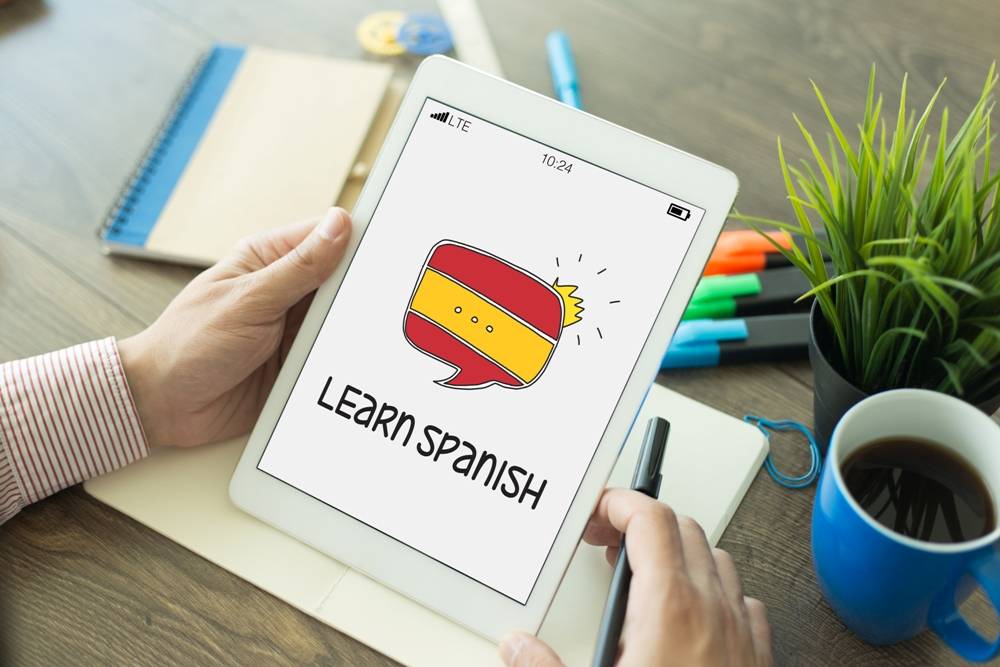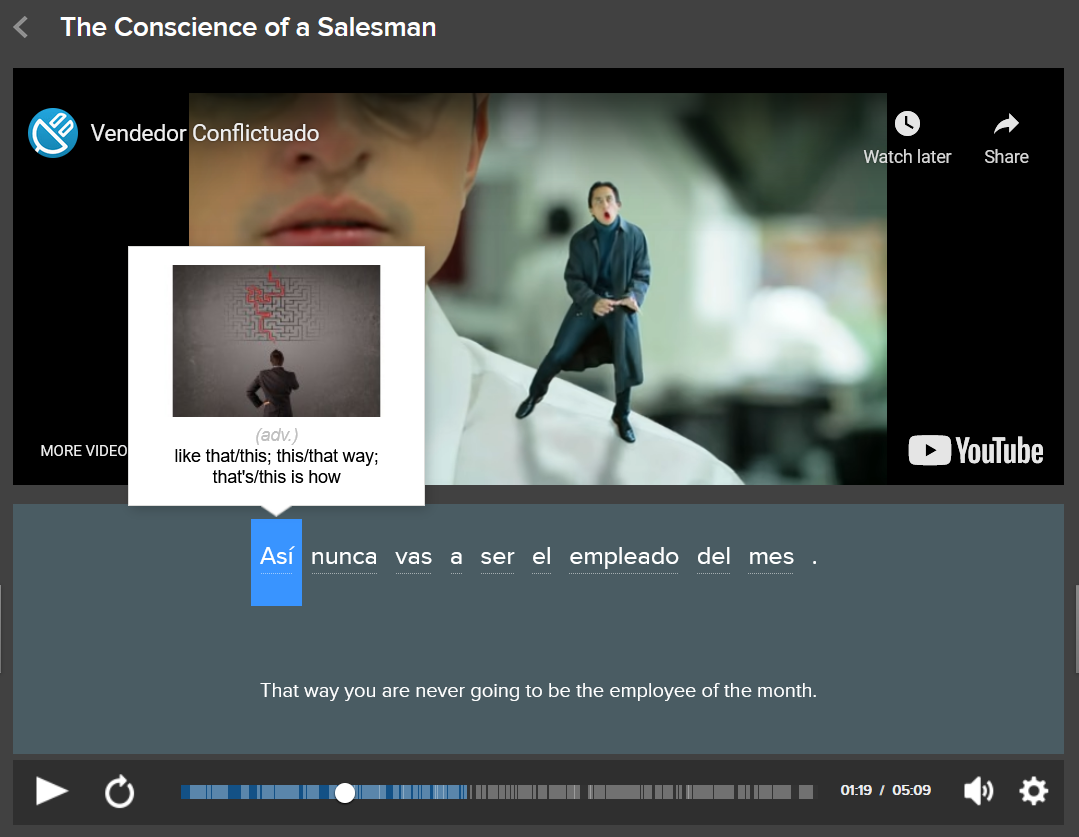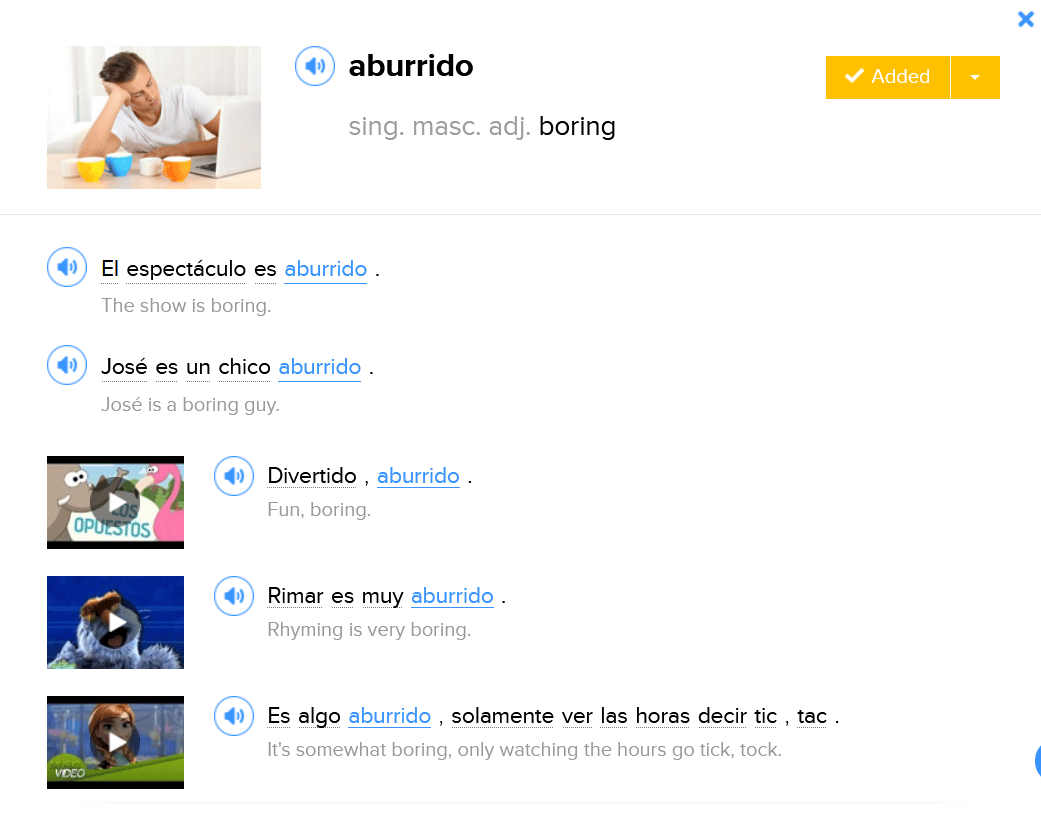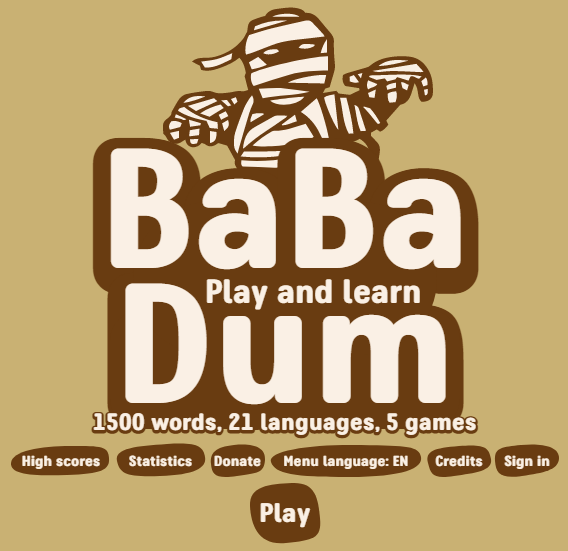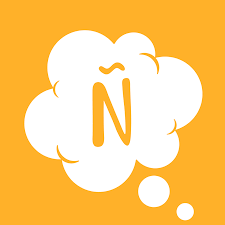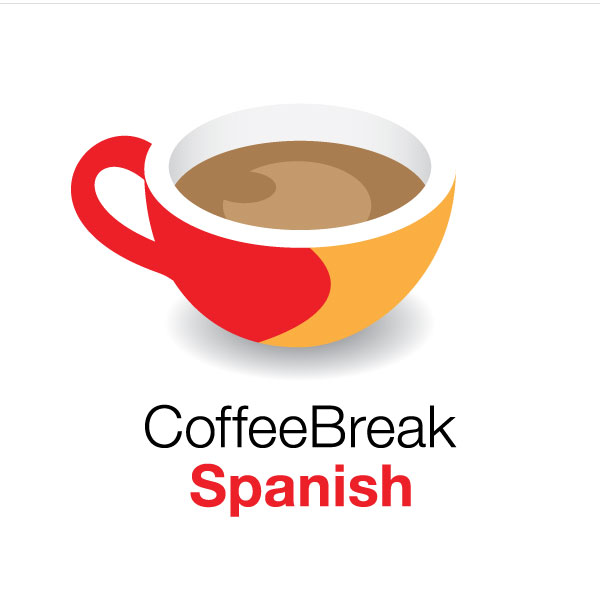
15 Resources to Learn Castilian Spanish
In Spain, you can walk in the footsteps of Cervantes’s “Don Quixote” and “Sancho Panza,” nibble tapas on the shore and check out the profoundly interesting architecture of Antonio Gaudí.
You’ll also have luscious castellano (Castilian Spanish) singing in your ear!
In this post, you’ll uncover the main characteristics of Castilian Spanish and show you the best online resources and real-world content for learning the most widely spoken language in Spain.
Contents
- What Makes Castilian Spanish Unique?
- Online Resources for Learning Castilian Spanish
- Learn Castilian Spanish from Authentic Sources
Download: This blog post is available as a convenient and portable PDF that you can take anywhere. Click here to get a copy. (Download)
What Makes Castilian Spanish Unique?
Castilian Spanish is the oldest dialect of the language, and all other variations of Spanish emerged from it.
Over its existence, many unique aspects of the accent have developed.
Some of the quirks you’ll encounter in Castilian Spanish are as follows:
Vosotros
In Spain, vosotros is the informal second-person plural subject pronoun, basically meaning “you all” or “you guys.” Consider it the informal version of ustedes.
In Spain, vosotros is used daily among family or friends, and normally omitted, as practically every other subject pronoun:
- ¿Qué queréis (vosotros)? — What do you [plural] want?
- (Vosotros) Debéis volver pronto. — You [plural] should come back soon.
If you’re not used to seeing, using or conjugating the vosotros form, this fabulous guide will get you all up to speed.
Ceceo
Many of you may have heard of the Spanish “lisp,” which is formally known as ceceo.
The “lisp” refers to the fact that most Spaniards say the soft c and the letter z with a “th” sound: /θ/ and in teeth.
You know a c is soft in Spanish when it’s followed by either e or i, like in the words cebra (zebra) and deciembre (December).
So the soft c and z are pronounced like an “s” in other Spanish-speaking countries (seseo), but as “th” in Castilian Spanish (ceceo).
Here are some additional words you can listen to, and then try saying yourself:
Leísmo
Leísmo is the frequent use of le to replace a human male direct object. It’s not technically correct, but it happens all the time in everyday spoken castellano.
We’re going to break it down for you, don’t worry.
If you recall from standard grammar, singular masculine direct objects can be replaced by the pronoun lo.
So, if I tell you that I haven’t seen Barack in forever, you might reply that, actually, “Michelle saw him yesterday.”
We’d normally translate this sentence as:
She saw who? Him (Barack). So “him” is our direct object, replaced by the direct object pronoun lo.
Le, on the other hand, is an indirect object pronoun.
It’s used to replace the third person singular indirect objects “him,” “her” and “you-formal,” and it answers the questions “to whom?” or “for whom?” (Hint: That means it always replaces a person.)
In the sentence “Barack gave flowers to Michelle,” for example, Michelle would be the indirect object. Barack gave what? Flowers (direct object). To whom? Michelle (indirect object).
In Castilian Spanish, though, to say our original sentence, “Michelle saw him yesterday,” you’ll usually hear:
Even though “Barack” is a direct object, and even though it should normally be replaced by lo, they’ll say “le.”
This happens so much in spoken castellano when the direct object refers to a human male that the Real Academia Española actually now considers le an acceptable direct object pronoun in that single case.
Make sure you know the correct rule first, and then start breaking it to speak true Castilian Spanish!
Castilian Vocabulary and Slang
As with many other dialects of Spanish, there are some words used in Castilian Spanish that aren’t used, or which have different meanings, in Latin American Spanish.
There are tons of comprehensive lists of Castilian slang terms like this one and this one.
Definitely give those a read, but to get you started, here are a few words you’ll hear on the Iberian Peninsula, followed by their partner terms in Latin American Spanish (AmL).
- Coche
| AmL: carro/auto — car
- Coger (un taxi) | AmL: tomar (un taxi) — to take (a taxi)
- Conducir | AmL: manejar — to drive
- Gafas | AmL: anteojos — eyeglasses
- Piso | AmL: apartamento — apartment
- Patata | AmL: papa — potato
- Móvil | AmL: celular — Cell phone
- Ordenador | AmL: computadora — Computer
- Refresco | AmL: gaseosa — Soft drink
- Zumo | AmL: jugo — Juice
Online Resources for Learning Castilian Spanish
It’s always important to have heaps of well-varied resources in your arsenal.
The sites below focus on teaching Castilian Spanish specifically, and can therefore act as ideal guides to use during your Castilian-learning journey.
Language Drops

Language Drops is a language learning system that’ll teach you Castilian Spanish vocabulary in micro-sessions of five minutes each.
Completely focused on words, Drops uses the image/word association and word repetition techniques to teach you Castilian vocabulary on 168 different categories.
You’ll have five minutes of free learning every day, during which you’ll be given words belonging to a specific topic.
The words are always accompanied by cute drawings to help you remember them, and your goal is to join the audio (which is perfect native Castilian) or the image to the written word while you do easy exercises like putting letters in order or dragging and dropping words.
If you want to use Drops to learn for more than five minutes a day, you’ll have to go Premium.
However, there’s a way to get access to all the vocabulary for free: the Visual Dictionary.
With the Visual Dictionary, you’ll have access to all 168 Castilian Spanish topics available on the app.
Once you choose a topic, a list of all the vocabulary included in it will appear in the two languages you’ve chosen.
You can click on any word to listen to it, see related vocabulary and a sample sentence and even learn how it’s said in a bunch of other languages.
The downside is that you don’t get to do any exercises while using the Visual Dictionary, so if you’re not very fond of lists of words, you might get a little bit bored.
FluentU
FluentU is an online immersion program for learners who want to experience Spanish from various places around the world. The program teaches Spanish through authentic videos like movie trailers and news clips.
Videos are categorized by skill level, format and topic, so you can quickly find something that’s engaging and level-appropriate. You can also search for words to see them it used in videos, or search for a location to see local speech from that area.
Use the interactive subtitles to find out more about any word as the video plays. Hover over or tap on the word to see an in-context definition, more examples of the word being used, a pronunciation guide and an image.
After each video, you can take vocab quizzes tailored to the video’s content. If you want to save words for further practice, you can add them to your own custom flashcard decks. The different exercises available target your reading, speaking, writing and listening comprehension skills.
You can access FluentU from a browser, or download the iOS or Android app for on-the-go learning.
Squid TV
Squid TV gives you access to a bunch of Spanish TV channels for free, so just pick your favorite from the list and start watching within a couple of clicks!
You can choose between national channels divided by category (like news, entertainment, music and sports, among others) and regional channels divided by region.
I come from Andalusia, so I personally recommend you give Canal Sur (Southern Channel) a go if you want to live a real Andalusian experience and learn a bit about this beautiful accent. If you’re a fan of flamenco and everything around it, this is definitely the place you’ll find it more easily, since it’s an integral part of our history and folklore.
As for nationwide channels, our public television channel (TVE1) is a great choice if you want to have a mix of everything Castilian Spanish, from news, documentary films and weather forecasts to national series, blockbusters dubbed in Castilian Spanish and entertainment programs.
Ba Ba Dum
Ba Ba Dum‘s motto is “Juega y aprende” (“Play and Learn”), and that’s exactly what you’ll do if you access this website.
Once you’re inside, just choose the Spanish flag and start playing and learning!
Ba Ba Dum includes 1,500 words that can be learned by playing five different games.
I recommend this site for intermediate learners of Spanish, since there are no previous explanations or introductions to the vocabulary. As soon as you press Play, you’ll start playing, literally.
So if you don’t have any previous knowledge of Spanish and want to give this game a try, you’ll probably have to use your intuition and good luck in order to guess the correct answers.
All the verbs in the game are in their infinitive form, and the adjectives in their masculine singular form. As for nouns, they all include their corresponding definite article.
The voice of the audio is that of a woman with an exquisite Castilian Spanish.
Dreaming Spanish
Dreaming Spanish is a YouTube channel with hundreds of videos created to teach you Castilian Spanish.
The host, Pablo, is a Spaniard with a love for teaching his native language, something you’ll see as soon as you start watching any of his videos.
All the videos in the channel have been divided into different categories and four levels (Superbeginner, Beginner, Intermediate and Advanced).
Pablo only uses Spanish, even in the Superbeginner videos. But don’t worry! He’s super-expressive and uses his hands to help you understand what he’s saying.
There are three playlists in this channel I really recommend you check out:
- Invited guests: which includes lots of videos with guests from all around the world (mainly from Latin America) that talk about many different topics.
- Spanish history: which will take you on a trip through Spain’s history.
Pimsleur
Pimsleur, the king of audio learning, focuses entirely on getting you comfortable with having fluent conversations in Castilian Spanish.
It’s not cheap, as you’ll see—but we have a trick that could get you all the goods for free.
Pimsleur has a much stronger auditory focus than some other programs.
Much of the language learning process with Pimsleur means listening to a conversation and then repeating parts of it, gradually building up knowledge until you can recall the phrases that have been said when prompted.
Pimsleur does come with a reading component, too, but this is secondary and not heavily focused on.
The audio is the huge selling point for them—you can use this program to learn easily and effortlessly, wherever you go.
Many people use this program for learning while driving! Just let the teachers guide you from basic phrases to complete sentences. Pimsleur always prompts you to listen, repeat and respond, making it highly interactive.
Each new lesson builds on the previous ones, cleverly weaving what you’ve already learned into new concepts. All in all, this program can help you make a seamless transition from newbie to fluent, with plenty of time and practice.
Here’s our secret, though: Before you take the plunge and buy this program, check to see if your local library has it! We’ve had good success with our local library systems having audio CDs for the Pimsleur language we’ve wanted to learn. If you have the same luck, check them out, pop them in your CD player, and voilà!
Coffee Break Spanish
If you want to learn Castilian Spanish with podcasts and videos, a great option is Coffee Break Spanish.
Coffee Break Spanish offers over 230 engaging episodes of about 20 minutes each, divided into four seasons that represent four different language levels (Season 1—beginners, Season 2—intermediate, Season 3—upper-intermediate and Season 4—advanced).
The website also has free travel diaries, an audio magazine focused on culture, an Espresso section focused on grammar, a To Go videovlog in which Marina, one of the hosts, asks people questions on the street, and the section En Marcha (On the move), which is a series of videos recorded in Malaga where different people are interviewed in Spanish.
There are many different topics covered in this podcast, from musical instruments and summer in Spain to the conditional tense and birthdays (and everything in between).
If you want to invest a little bit of money, check out the Coffee Break Academy, where you can buy online courses (the Reading Club course is fantastic to build up your Spanish vocabulary and improve your reading skills) and have access to resources like video and audio lessons, study guides, transcripts and more!
VideoEle
VideoEle (español como lengua extranjera — Spanish as a foreign language) is a free online course that covers levels A1 (complete beginner), A2, B1 and B2, so it’s best for beginners or early intermediate learners who want to add some structure to their learning.
From the course page (linked above), simply select a level to get started.
Each level has between 30-40 video lessons, and each lesson comes with a video, a transcript, a PDF guide with solutions and interactive on-screen activities.
It’s not the flashiest site out there, but all of the content is in Castilian Spanish, and it’s all free—so if this looks helpful to you, take advantage!
Wikitravel Castilian Spanish Phrasebook
The Wikitravel Castilian Spanish Phrasebook is a guide chock-full of useful information for anyone learning Castilian Spanish.
It begins with a simple pronunciation guide and continues with phrases for a variety of handy categories.
There are basic phrases, phrases for problems you might encounter, numbers, seasons, days, colors, transportation, shopping, eating and more. You can learn a substantial amount of vocabulary from this resource alone.
Does a phrasebook give you the urge to take off and travel to Spain? Then your next step should be finding a great Lonely Planet travel guide about Spain.
They offer some excellent phrasebooks for general Spanish which can help you in Spain, but none that are specific to Castilian Spanish.
Lonely Planet exists to guide you through your travels and get you through simple conversations with natives.
Preply

Preply is a website where you can find private tutors to learn the language of your dreams.
Start by typing the word “Spanish” and you’ll get a list of all the tutors that teach Spanish around the world.
Since you want to learn Castilian Spanish, make sure you check the options “Native Speaker” and “Tutor is from Spain” (you’ll notice the Spanish flag beside the picture of each tutor after you do that).
You can also define the price per hour you want to pay and your availability, and then sort the results by relevance, rating or price, among other parameters.
If you decide to learn Castilian Spanish with a tutor, bear in mind not every native Spanish speaker is necessarily a good Spanish teacher.
Teaching requires a set of skills not everybody has, so read the tutors’ reviews before you choose one, and don’t hesitate to look for a different one if you’re not satisfied.
There are over 900 Castilian Spanish tutors on that page alone, so take your time.
Learning with a tutor has the advantage of having a native speaker all to yourself during the whole duration of the class.
Granted, this way of learning isn’t the cheapest one, but it can give you awesome results if you find the right person for you.
Learn Castilian Spanish from Authentic Sources
Watch Spanish YouTubers
When learning Spanish specific to a certain region, it’s important to familiarize yourself with the local accent. Actually hearing the accent is a great way to do this.
Here are a few more places on YouTube where you can swoon over that suave Castilian accent (plus pick up tons of real-world slang phrases!):
- Here’s a video of Alberto Jorrin‘s voice samples.
- Dulceida posts a new YouTube video every miércoles (Wednesday).
- YellowMellow‘s “Draw My Life” video is a creative, visually stimulating way to learn about the Spanish YouTuber.
- Gamers will especially like aLexBY11‘s channel, which also has some fun vids everyone will enjoy, like this lip-reading challenge.
- AuronPlay keeps it real, from jokes and interviews to entertainingly recounting events that happen in his days.
A Google search for “mejores vloggers/youtubers españa” (best vloggers/YouTubers Spain) should get you plenty more to watch.
If you get hooked on one vlogger, still mix it up from time to time. That’ll help ensure you’re getting exposure to both men and women, old and young (some TV shows below will help with this, too).
There are lots of different styles of voices within all the lovely humans who speak castellano, so it’s great ear training to hear a variety of them.
Read Castilian Spanish Literature
Whether it be classics like “Lazarillo de Tormes” (“Little Lázaro from Tormes”) or modern novels like “La sombra del viento” (“The Shadow of the Wind”), getting lost in a good book written by a Spanish author will surely benefit your Castilian studies, especially if you listen along with an audiobook recording while reading!
While there are lots of ways to get Spanish audiobooks, such as your local library and iVoox.
In iVoox’s search filter, select “castellano” and “audiolibros y relatos” for audiobook results in Castilian Spanish (and don’t forget to set the country to “España” up in the top right corner).
Classic books will have the advantage of more support materials online (summaries, audiobooks, free e-books, translations, discussion questions, etc.), as they’re often taught in literature classes both to native Spanish speakers and Spanish learners, whereas contemporary novels will have more current language. Go for whatever interests you most!
Here are a few contemporary Spanish books to consider, just to get you started. After each Spanish title, you’ll find the English translation in parentheses. These aren’t necessarily the book titles in English, though, which is why they aren’t capitalized:
- “El Testigo” (The Witness) by Juan Villoro.
- “El juego del ángel” (The Angel’s Game) by Carlos Ruiz Zafón.
- “La resistencia” (The Resistance) by Laura Gallego García.
- “Los días que nos separan” (The Days that Separate Us) by Laia Soler.
- “Un hijo” (A Son) by Alejandro Palomas.
And here are a few popular authors from Spain to check out as well:
- Dolores Redondo — Criminal thrillers
- Javier Marías — His main characters are often interpreters and translators
- Laura Gallego García — Young adult fantasy
This is only the tip of the iceberg! Remember to do your Googling in Spanish to find recommendations that suit your tastes more easily.
Watch Television Shows from Spain
Luckily, you already have a complete guide to TV in Spain here, which you should check out now to pick the first show you’ll start watching. That’ll really get your ear used to the Castilian accent.
“Los Protegidos,” which is gushed about in the previous link, is especially great for learning the Castilian accent. Here’s why: One of the main characters, Jimena, is played by Colombian actress Angie Cepeda. All of the other principal roles are played by Spaniards, so in every episode, you can compare and contrast Jimena’s Colombian voice with the Castilian Spanish of the other actors and actresses.
You can use a TV show’s Wikipedia page in español (like this one for “Los Protegidos”) to quickly check where the main actors and actresses are from before watching. Or, for a fun little game, go into it blind and make those predictions as you watch.
In addition to getting your ear accustomed to the accent, remember that you can always pause and repeat to use TV shows for speaking and shadowing practice.
Another idea is to turn watching into a game with a friend: One point for every ceceo, two points for each Castilian slang word/phrase, and five points for each leísmo you hear!
Sing Along to Music from Spanish Pop Stars
Play music sung by artists from Spain during spare moments throughout the day—while you’re getting ready, showering, working, cooking, etc.—to help hone your ear in on the sounds and words used in Castilian Spanish.
Singing along is a fantastic way to work on your ceceo! Find a particular song you like riddled with the famous lisp and sing along while using it yourself.
You could also print a copy of the lyrics and first try to highlight which words you think will have the ceceo. Then listen to the song and see if you were right.
Here are just a few names and tunes to help you get started:
- David Bisbal: Rock out to his hit “Esclavo de sus besos” (Slave of Her Kisses), or slow it down to “Mi Princesa” (My princess), which is full of great ceceo words.
- El Canto del Loco: This group has lots of awesome songs, including “Un millón de cicatrices” (A Million Scars) and “Peter Pan.”
- Enrique Iglesias: The catchy “Bailando” (Dancing) will certainly get you moving!
- “Frozen”: Don’t forget about musicals! Check out “¡Suéltalo!” (Let It Go) from Disney’s “Frozen” for a melody you probably already know.
- Malú: Born in Madrid, the pop singer of “Quiero” (I Want) and “Blanco y negro” (White and Black) also sings flamenco.
- La Oreja de Van Gogh: This is a group from San Sebastián, which falls more into the “indie pop” category. Try the clear and slower “Jueves” (Thursday) or “Mariposa” (Butterfly) to start. The former lead female, Amaia Montero, left the group in 2007 for a solo career, so she’s another female singer you can search for!
- La Quinta Estación: The lead singers from this group are both from Madrid. “Recuérdame” (Remember Me), featuring American singer Marc Anthony, is a powerful tune with wicked harmony.
You can also search for current top song lists (“las mejores canciones”) from Spain, like this list of the top 40 songs in Spain in 2023, or lists of pop bands from Spain to expand your musical tastes.
Speak with Actual Spaniards
Lastly, one of the most effective methods to learn Castilian Spanish is to speak with native speakers from Spain.
So when you’re using these sites to look for a conversation partner, search for someone in Spain who speaks castellano!
The same goes for when you’re searching through pages of potential Spanish tutors online. Look for someone who hails from Spain. Even better, look for someone from the particular region of Spain where you’d like to travel one day!
Apart from Preply (mentioned in the previous section), a superb place to find an online Spanish tutor who’s currently sitting in Barcelona or Madrid is Verbling, hands-down. There, you’ll easily be able to sort and filter by region of origin, meaning that you’ll find the Spaniard you need to teach you Castilian Spanish with little to no effort.
You might not feel “ready” for conversing with a real Spaniard, but that’s completely normal—it means that starting now will only help you grow and learn, because there are many unknowns at this point.
The more you do it, the easier it’ll get and the more comfortable you’ll get understanding and speaking Castilian Spanish.
You just have to take action, allowing your curiosity and desire to learn Spanish to be stronger than your fear of making mistakes, because the truth is you’ll make so many mistakes! But each of them will be a beautiful learning opportunity, so there’s nothing to be worried about.
In addition to speaking practice, don’t forget to ask your Spanish language partner for recommendations on more native content.
What are they watching on YouTube? Which sites do they visit daily? What books are their friends raving about? What TV shows are they hooked on?
A Spanish exchange partner is a valuable resource on so many levels!
By engaging in a variety of these learning methods, you’ll be well on your way to walking the cobblestone streets of Toledo, confidently conversing with locals and unleashing your inner Spaniard like a champion.
Enjoy your journey turning fantasy into reality with Castilian Spanish!
Download: This blog post is available as a convenient and portable PDF that you can take anywhere. Click here to get a copy. (Download)

